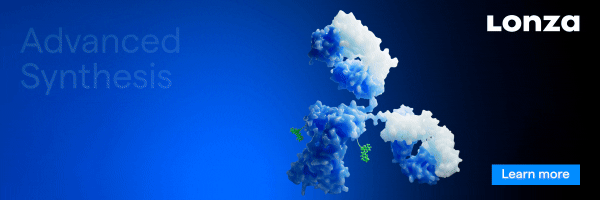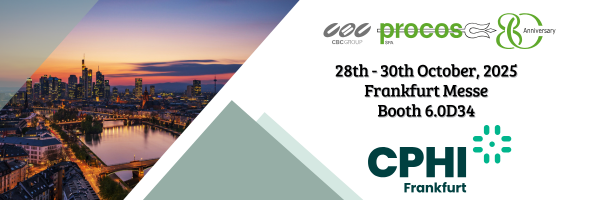By Kenneth Drew, Vice-President Flamma USA

As a drug begins to show promise, those involved with the supply chain must spring into action to ensure that the drug will be available to patients as soon as possible following regulatory approval. Reading the tea leaves is challenging enough, particularly when prognosticators say that you need 200 kg and then a week later revise the amount to 800 kg based on updated projections of the patient population. In other words, you never really know.
Working with your suppliers is critical to the success of the molecule. Most often, the API is launched with one CDMO while you prepare to bring in secondary suppliers. Based on your workload, you may be tempted to allow the launching CDMO to take over the sourcing of key regulatory starting materials, or RSMs. Resist this temptation, as it will only lead to problems later on.
Managing RSMs and key alpha raw materials
Understanding the impact RSMs will have on the cost of your molecule is critical. While this article will focus on RSMs, you can easily substitute the phrase “key alpha raw materials” for “RSMs” as both apply to what you will read.
While cost is important, timelines are often more important. You need to ensure not only that your API can be made, but also that you understand the total cost per kg. If you negotiate with the launching CDMO and then try to bring on secondary suppliers, knowing the true cost of the RSMs will help you in comparing costs. Apples to apples is always better than apples to oranges.
Smart sourcing dictates have two suppliers providing the RSMs. Why? CDMOs concerned about profit often look to decrease the costs of RSMs, which could jeopardize access to a consistent supply. It is difficult to quickly resolve these shortfalls because RSMs in today’s market are often complex and certainly not commodity chemicals. They aren’t catalog items, they need significant lead times to produce.
Since the CDMO marketplace is rather incestuous, it’s not uncommon to find competitors working together and supplying RSMs to one another. The issue is that the API producing CDMO may not have a sourcing group that clearly understands the difference between common solvents/reagents and RSMs.
The innovator company should be aware of the amount of API being produced to ensure that the drug product can be made and that their Gantt chart is viable. As they look to bring on second suppliers, they will greatly benefit from knowing that the cost of the RSM is the same for all potential secondary API suppliers. This gives them the leverage to decide where to place orders for API as the drug matures to commercial status.
Risk mitigation
The BIOSECURE Act. Tariffs. Geo-Political turmoil. Shortages in the marketplace. China-phobia. Capacity challenges.
Numerous potential obstacles can affect the production of your drug. Above all else, your supply chain is the backbone of your drug. When one is in the early stage of drug development, having dual sourcing makes no sense. That said, you need to carefully understand the critical materials early on. This allows you to formulate a plan to ensure that you will not be left high and dry due to a shortage. You also avoid the possibility of being trapped by a single source that may arbitrarily raise prices for no reason.
You need to build trust with your supplier and work together as a true partner. You also need to be honest about pricing. As drugs mature, the costs should come down. A good partner will do this automatically as they become more and more familiar with the process and gain efficiencies as they make the material multiple times and scale to larger volumes. Transparency helps service providers and customers.
Far too often I hear from customers who find out that their initial supplier only cares about their bottom line. I have a saying: “Never give your customer a reason to look elsewhere.” This is why my company looks to proactively decrease the cost to our customers while providing ourselves a margin that allows us to stay in business.
If an innovator company knows that it’s important RSMs are being made at two reputable suppliers, they can also see what it costs to make the RSMs. If one supplier is significantly out of line, you can decrease the amount you purchase from them, but it may be wiser to have an open and frank discussion about pricing.
Unfortunately, some suppliers are shaving margins and lowering costs in order to gain business — perhaps even working at a loss. “Some money is better than no money.” And, yes, these CDMOs are typically based in China. While one cannot necessarily blame them, you need to understand that this low cost is almost certainly temporary and will likely increase. Thus, be wary of signing supply agreements without certain protections for your company.
I won’t get into CDMOs that require non-refundable down payments to lock in production slots, yet will not refund you if they are delayed in production. I plan to discuss this scare tactic in a future article. That said, numerous CDMOs will work with you and not charge a reservation fee. They also won’t force you to sign a supply agreement guaranteeing the CDMO a certain percentage of your drug volume in perpetuity. Why would you do this to your company and the supply chain? This is not a Shark Tank deal with Mr. Wonderful.
To reiterate, modern RSMs require significant time to produce. Innovator companies need to precisely understand these timelines. Sometimes the API CDMO may neglect to share the timelines and then blame the RSM CDMO when, in reality, it is the API CDMO that forgot to build a proper Gantt chart and delayed issuing POs for a variety of reasons. However, by having at least two suppliers that you can trust, they can pick up each other’s slack if any timing issues do arise.
Long term strategy
A forward-looking supply chain strategy pays dividends. As one colleague once told me, “When it comes to commercial supply chains, boring is good.” Boring means predictable. Boring means your systems are working. Boring means the effort invested early on is delivering peace of mind.
Whether it’s holding safety stock, leveraging free trade zones, forecasting demand, or directing your API CDMO to the right RSM suppliers, these measures all help stabilize your supply chain. They keep your program on track, your management confident, and your life much less stressful.
By investing in a strong, resilient supply chain, you ensure your company the enjoyment and the benefits of a “boring,” well-run operation. Until, of course, the next new API comes along. Fortunately, you will already have the playbook in hand.


